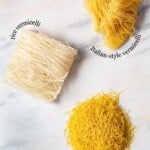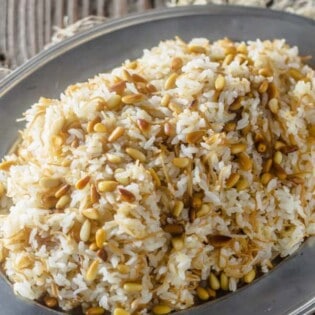Everything you need to know about vermicelli, including the different types of vermicelli, and our favorite ways to put these tiny but mighty noodles to good use!

Table of Contents
What is Vermicelli?
Vermicelli, meaning “little worms” in Italian, is simply a type of round noodle best known for its thinness. In the U.S. vermicelli falls somewhere between spaghetti and angel hair pasta, with variations throughout the Mediterranean, Africa, Central America, Asia, and beyond.
Vermicelli doesn’t demand your attention. It’s rarely the main event, or even listed on the menu, unlike “Linguini with Clams” or “Stuffed Manicotti.” But what vermicelli lacks in recognition it makes up for in its ability to add compelling texture to a dish, soaking up the flavor and letting its co-stars steal the show.
In the Mediterranean, wheat vermicelli brings the perfect crunch to Lebanese Rice, while shorter vermicelli, also called fideo, acts as the base for Catalan Fideuà. It even makes its way to the sweet table, with rice vermicelli soaking up a sweet syrup for the refreshing Persian frozen treat Faloodeh. Always the bridesmaid never the bride!
Let’s give this little noodle the attention it deserves. Read on to learn all about vermicelli, including where to find it, how it’s made, and our favorite vermicelli recipes.
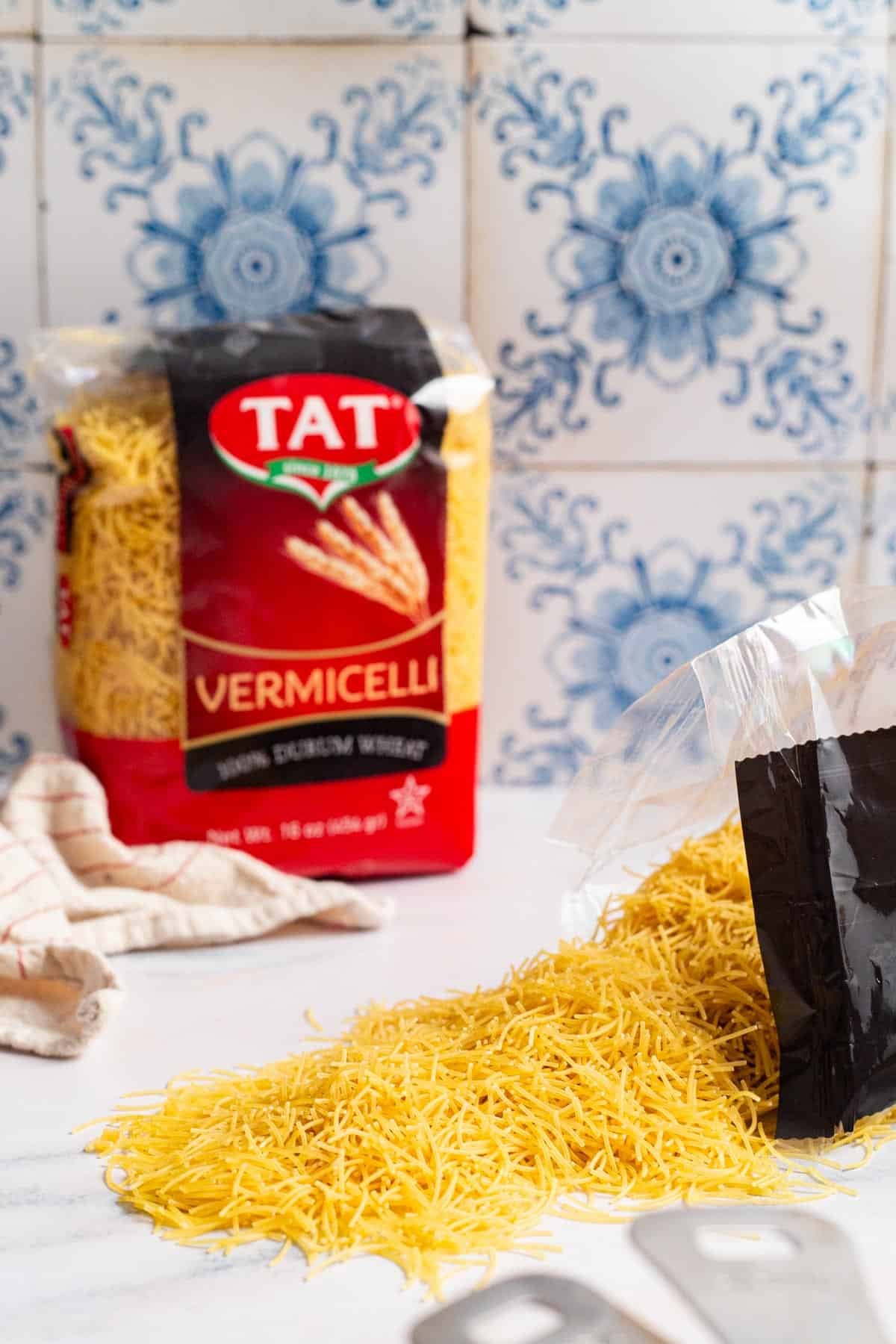
Vermicelli Varieties
Many cultures have their own variety of thin noodles, from Japanese somen to Indian semya. But in terms of what’s typically described and packaged as “vermicelli” in Mediterranean cuisine, there are three main types:
- Italian wheat vermicelli: Long, thin yellow-ish strands made from durum wheat semolina (and sometimes eggs if it’s fresh).
- Fideo: Sometimes called “short vermicelli” or simply “vermicelli” these are simply shorter wheat vermicelli noodles. These are also common in Mexican and Latin American cuisine.
- Rice vermicelli: Sometimes called “rice noodles,” these are similarly thin but made from rice flour or rice paste. (This is different from cellophane or glass noodles made from mung bean and rice starch that become translucent after cooking.)

How is Vermicelli Made?
The method to make vermicelli varies by region, with some still using traditional techniques like manual pressing and sun-drying. But commercial production is most common. Here are the steps:
To Make Wheat Vermicelli
- Wheat flour, water, and sometimes salt are mixed and kneaded.
- The dough is extruded or pushed through a machine (or a manual press) to create thin strands.
- The strands are dried, either by the sun or in large heated drying rooms or tunnels.
- The dried strands are cut and packaged.
To Make Rice Vermicelli
- Rice is soaked, ground into a fine paste or flour, and mixed with water to create a smooth batter. The batter is spread on trays in thin sheets and steamed to cook.
- The cooked sheets are cut into thin strands.
- The noodles are dried, cut, and packaged.
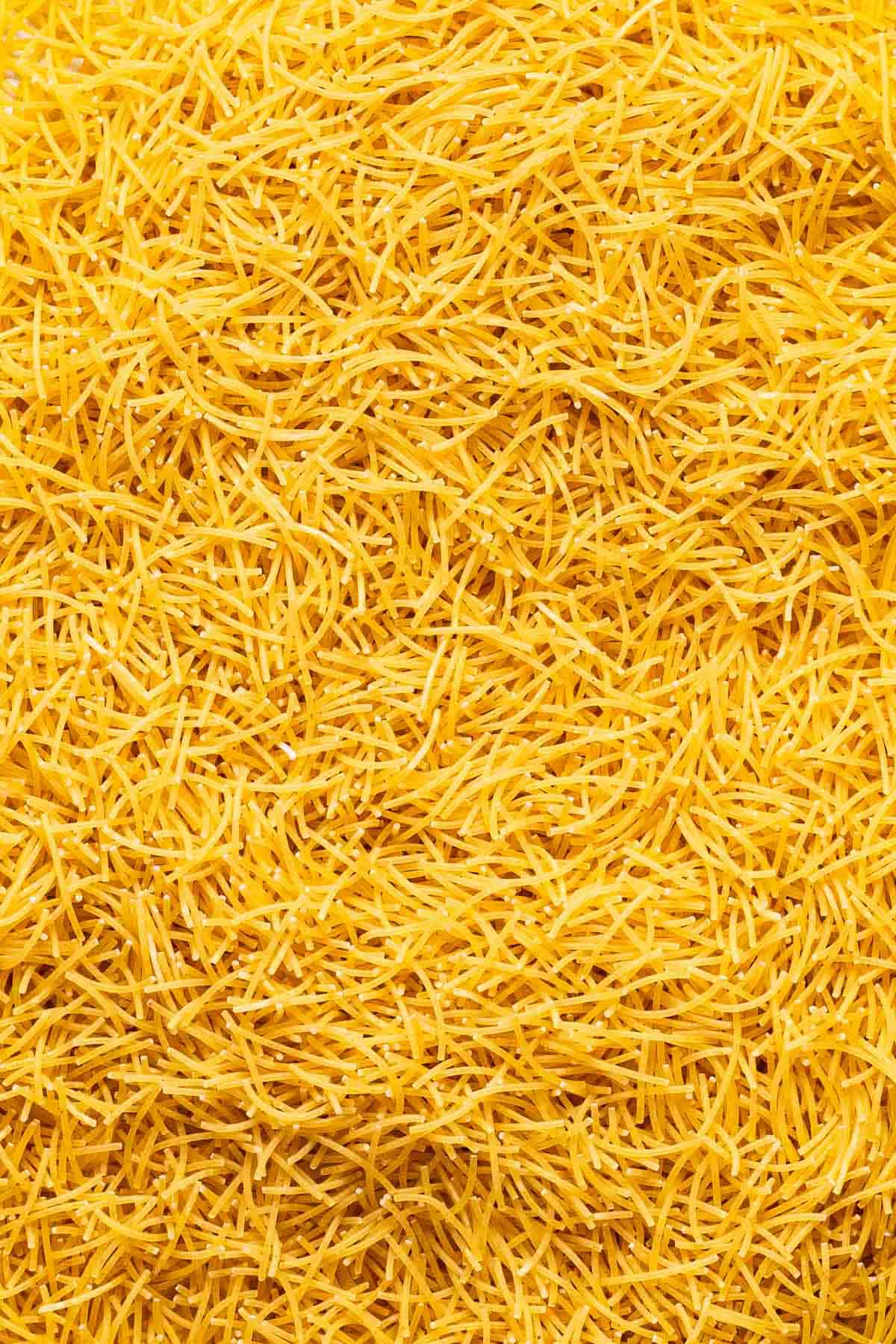
Is Vermicelli Gluten-Free?
Rice vermicelli is gluten-free (though, of course, always check the packaging). Rice vermicelli is lighter both in color and flavor. Wheat vermicelli is not gluten-free. If you’re cooking with Italian-style vermicelli, which has a yellow tint, it’s safe to assume it is not gluten-free.
You can swap wheat vermicelli for rice in most recipes for a gluten-free option. Keep in mind that rice vermicelli will have a milder flavor and typically a shorter cooking time. Check the package and adjust to avoid overcooking.
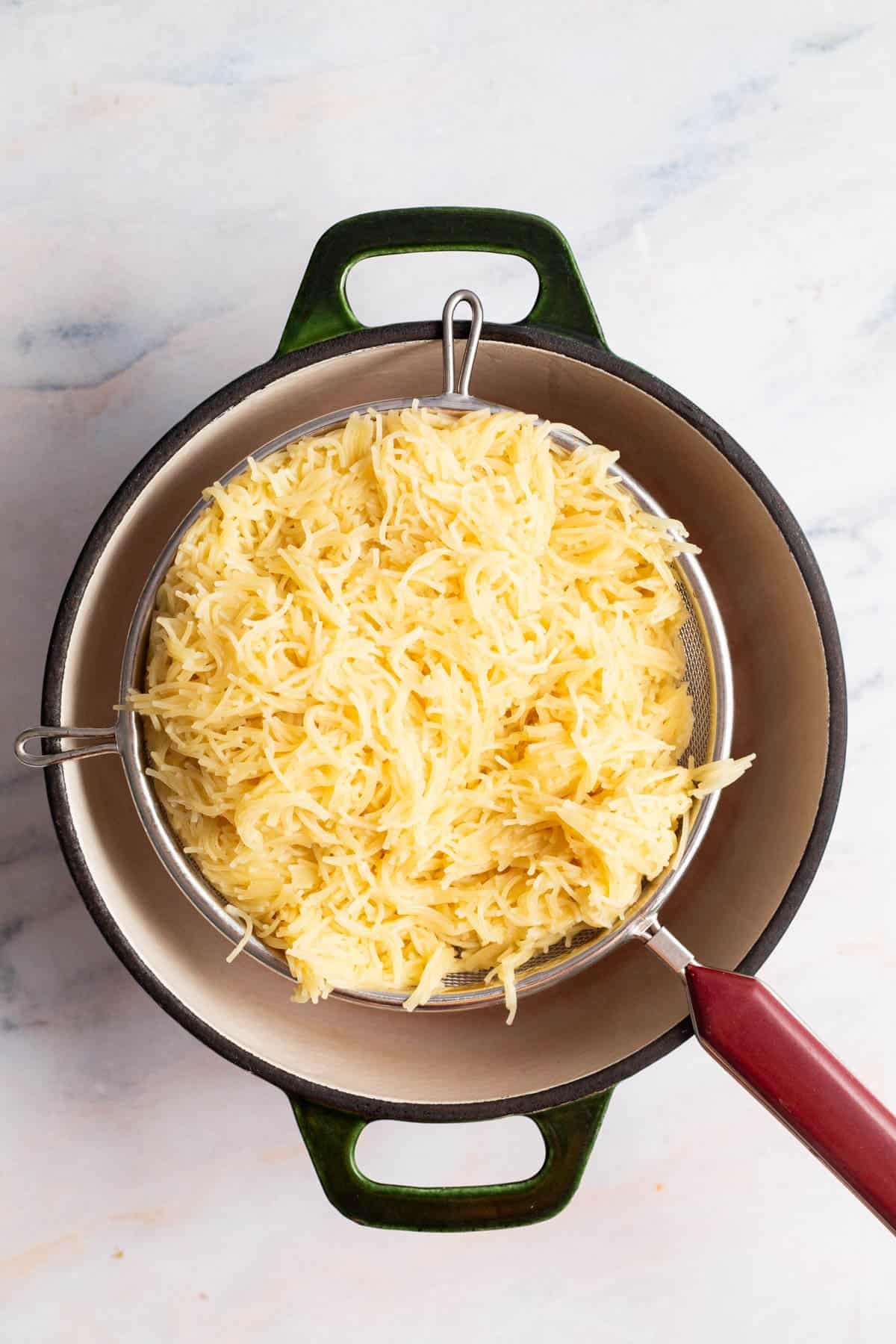
How to Cook Vermicelli
You cook vermicelli just like any noodle. Check the package because it will depend on the brand, but generally speaking you cook them in boiling water until tender. This, of course, changes depending on the recipe. More often than not, you’ll toast and simmer the vermicelli in broth or water along with other ingredients.

Try our Authentic Vermicelli
Our favorite Vermicelli Noodles, sourced from Turkey and made from 100% durum wheat semolina flour.
Try Vermicelli in These Recipes
Lebanese
Lebanese Rice with Vermicelli
Soups and Stews
Mediterranean Spinach Stew with Chickpeas
Sides and Small Plates
Loaded Lebanese Rice: Hashweh (video)
Browse all Mediterranean recipes.
Visit Our Shop.

